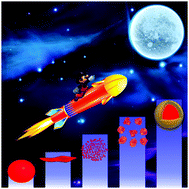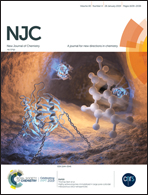Aluminum nanoparticles manufactured using a ball-milling method with ammonium chloride as a grinding aid: achieving energy release at low temperature†
Abstract
Aluminum nanoparticles are widely employed in many fields. However, methods for producing aluminum nanoparticles on a large scale are limited. In this work, we introduce a facile method for manufacturing nanosized aluminum powders on a hundred-gram scale. The key reagents used are ammonium chloride and aluminum(III) acetylacetonate, employed as a grinding aid and surface passivation agent, respectively. The obtained aluminum nanoparticles present excellent stability and are fully characterized by thermogravimetric analysis, X-ray diffraction, scanning electron microscopy, transmission electron microscopy, X-ray photoelectron spectroscopy, and nitrogen adsorption–desorption isotherms. Well-formed aluminum nanoparticles with average particle sizes of approximately 30 nm and high specific surface areas of over 30 m2 g−1 can be obtained using the optimal ball-milling reaction time. In this case, the initiation temperature of oxidation was observed at approx. 150 °C and the weight increased by approx. 39% when heated under an air atmosphere. Furthermore, these aluminum nanoparticles achieved quick combustion and a flame temperature of over 1100 °C, which have not been observed using micron aluminum powders. This work provides a facile method for the industrial manufacture of high-quality nanosized aluminum powders.



 Please wait while we load your content...
Please wait while we load your content...